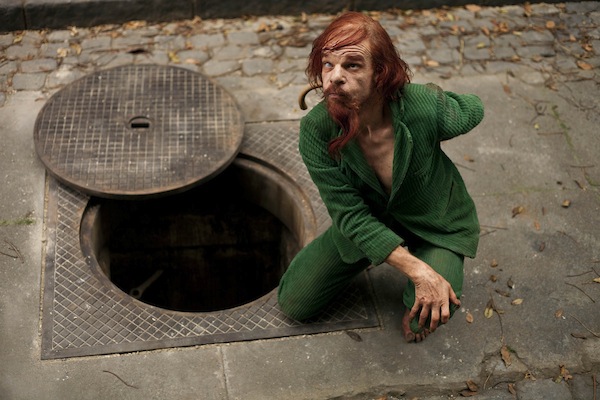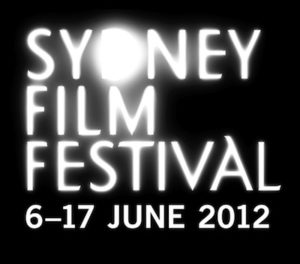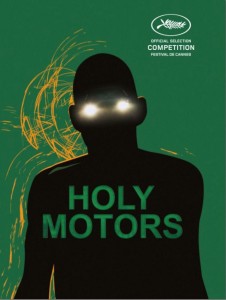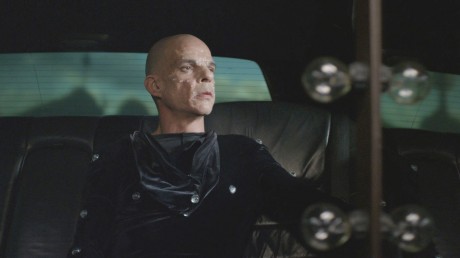Leos Carax delivers an audacious project that is equal parts magic and insanity, and a reminder of all the things that cinema has to offer.
[stextbox id=”grey” caption=”Holy Motors (2012)” float=”true” align=”right” width=”200″]
Director: Leos Carax
Writers: Leos Carax
Runtime: 115 minutes
Starring: Denis Lavant x 11, Edith Scob, Kylie Minogue, Eva Mendes, Michel Piccoli
Festival: Sydney Film Festival 2012
Distributor: Icon
Country: France
Rating (?): Certified Bitstastic (★★★★★)
[/stextbox]
Leos Carax may lift the character of Merde from his segment in the anthology film Tokyo! (2008), but Holy Motors is unlike any other film. Equal parts roller coaster ride, surreal trip inside the mind of a madman and the blunt object of unrestrained ego, this adventurous vehicle won the Prix de la Jeunesse (Award of the Youth) at Cannes 2012, and may have been the most offbeat film to ever be in the running for the Palme D’Or.
With the exception of his contribution to Tokyo!, alongside Michel Gondry and Bong Joon-ho, it has been 13 years since Carax’s last feature, the controversial Pola X (1999). An adaptation of Herman Melville’s tale of incest, it caused a stir for its use of hardcore unsimulated sex. While it was perceived as something of a failed experiment, it marked Carax as part of a wave of New French Extremism. With Holy Motors, Carax has been causing waves once again, but this time it is for taking audiences down the rabbit hole of surreal genius.
Defying conventional explanation, Holy Motors is ostensibly a drama filtered through nocturnal dreamscapes. It follows a day in the life of Carax’s parallel being Monsieur Oscar (Denis Lavant), who is chauffeured in a big white limo by Celine (Edith Scob) to a series of “appointments”. Taking on the guises of various people, he becomes a beggar, a motion-captured stuntman, a hitman and of course, the flower-chewing leprechaun Merde, who abducts Eva Mendes and takes her back to his cave. He enters the live and loves of people, only to depart just as quickly, including fellow traveller Kylie Minogue, who sings an original, orchestra-backed love song before plunging back into the darkness. The fragments don’t connect in a linear way, but neither do the ones in a dream.
With Holy Motors, Carax’s aim is to make his statement on the increased digitisation of society, using the limousines as a representation of “the old futurist toys of the past” and the increased shared space we inhabit with those constructs. Indeed, Carax feels we have turned ourselves over to the virtual, recklessly abandoning the old machines when we no longer need them. A scene towards the end of the film speaks directly to this, but as Monsieur Oscar lives out his eleven or so separate lives, what is fascinating is just how effortlessly the audience buys into that scenario. We can be entranced by the pinpoint lights of motion capture performances, just as we later feel the genuine emotional poignancy of a father chastising his daughter for being socially awkward. Perhaps Carax is simply reminding us of the different hats we all exchange without thought every day.
Carax continues to present surprises and revelations throughout the film, just as cinema is meant to do. At no point is there any sense of inevitability, as the filmmaker harnesses the power of dream logic to seamlessly take us on a journey like no other. The film is ironically shot on digital, at odds with Carax’s feelings on the medium, but the beautiful photography by the César winning Caroline Champetier (Of Gods and Men) never betrays this. Veteran performer Michel Piccoli might remind us of the legacy of cinema that has come before, just as Carax leads us into uncharted territory we might readily call “post film”. Holy Motors is one of the most original films of the century.
Holy Motors played at the Sydney Film Festival in June 2012. It will be released in Australia on 23 August 2012 from Icon.







